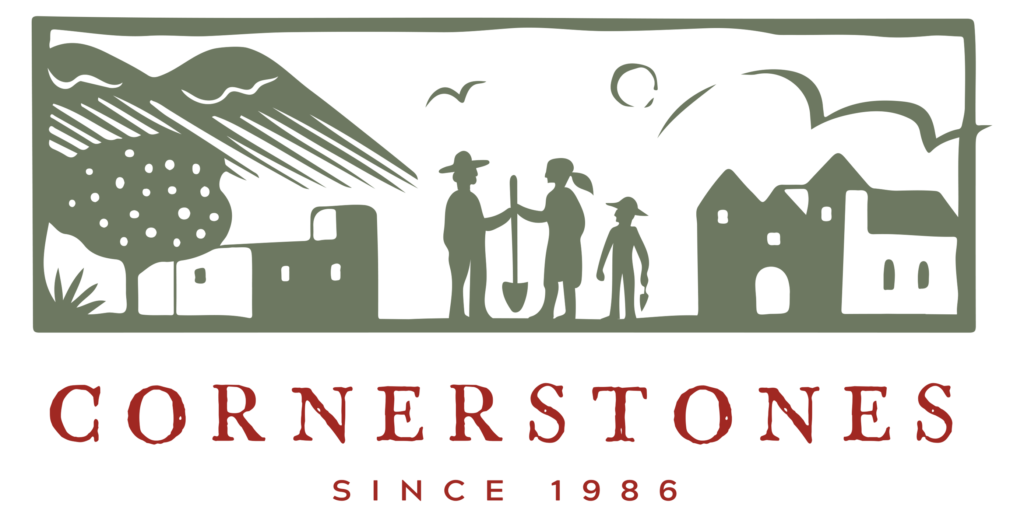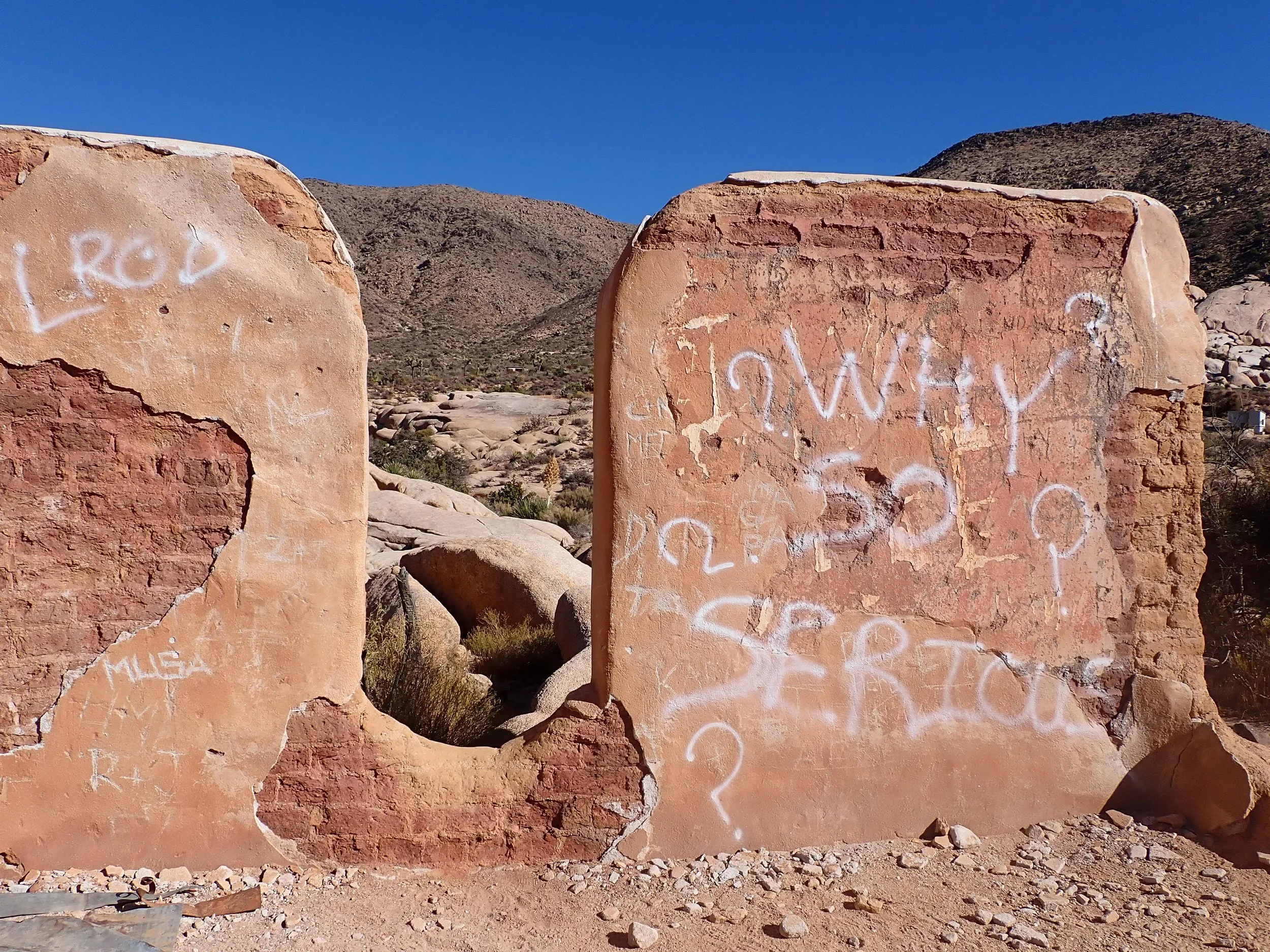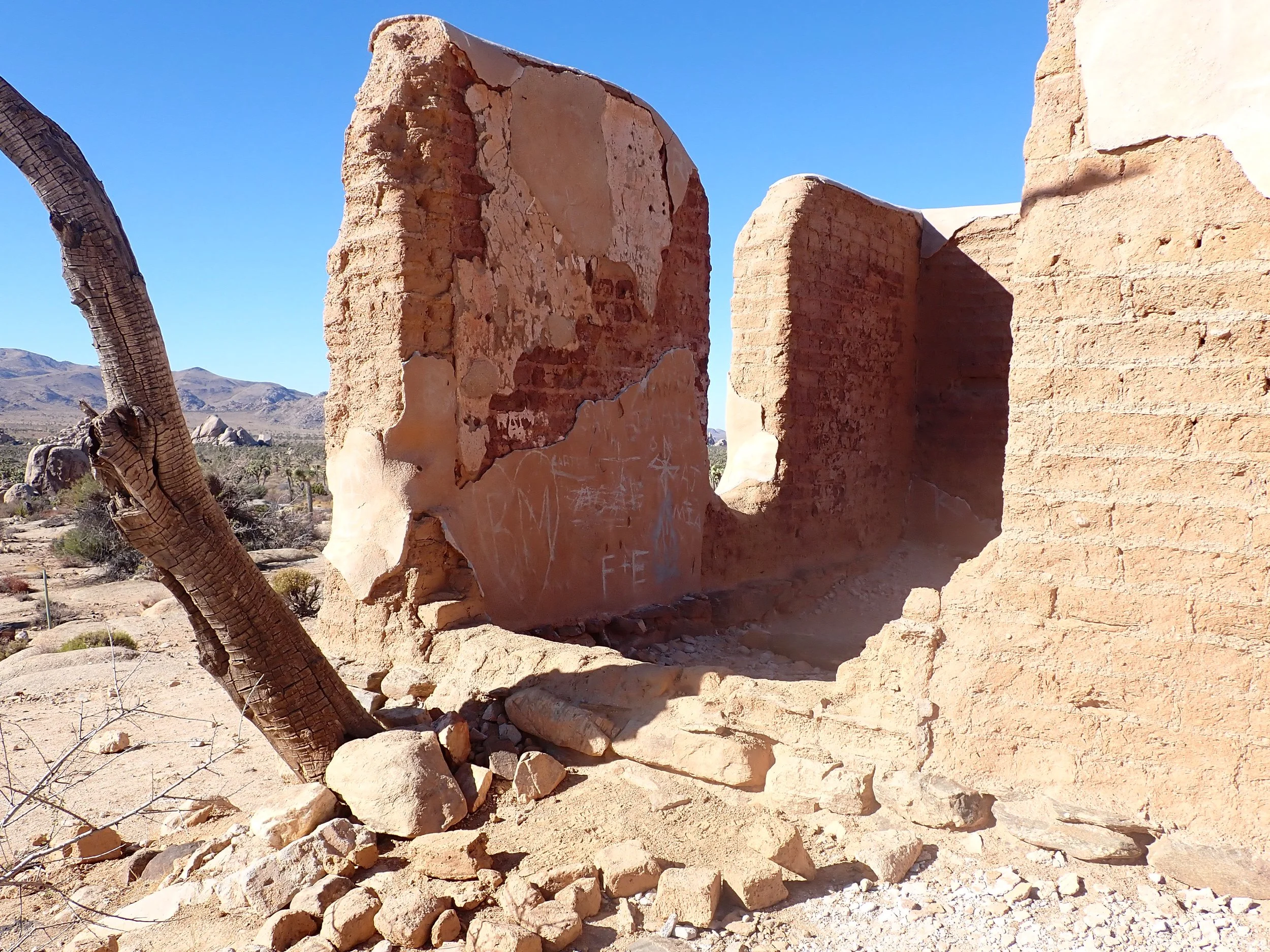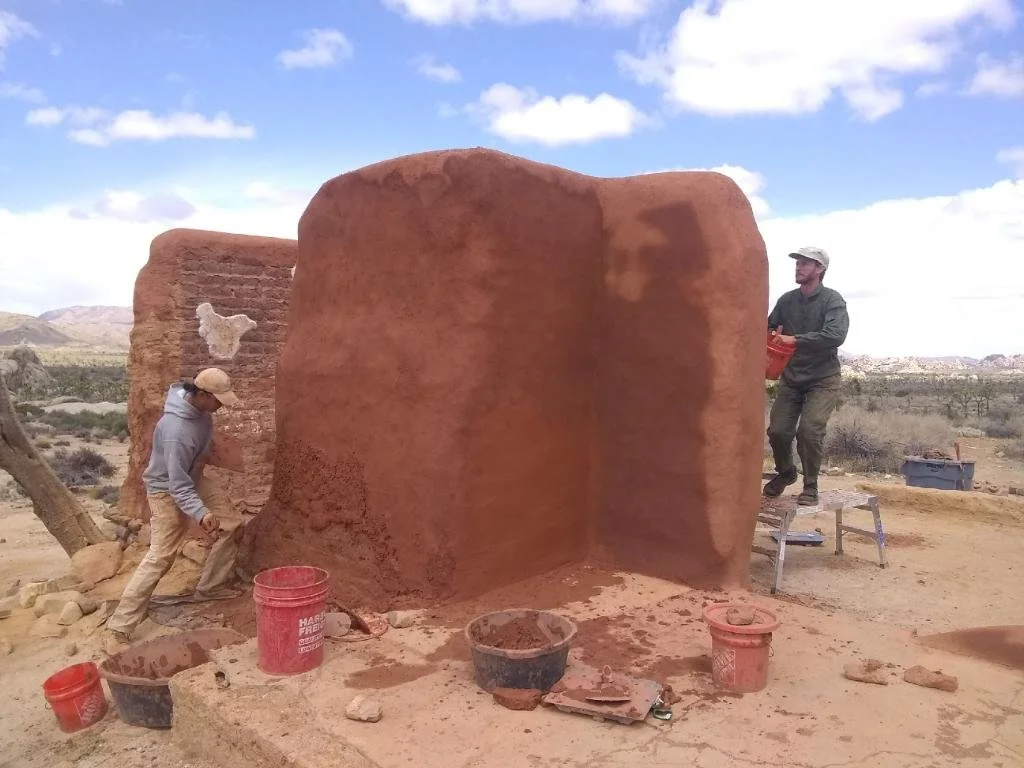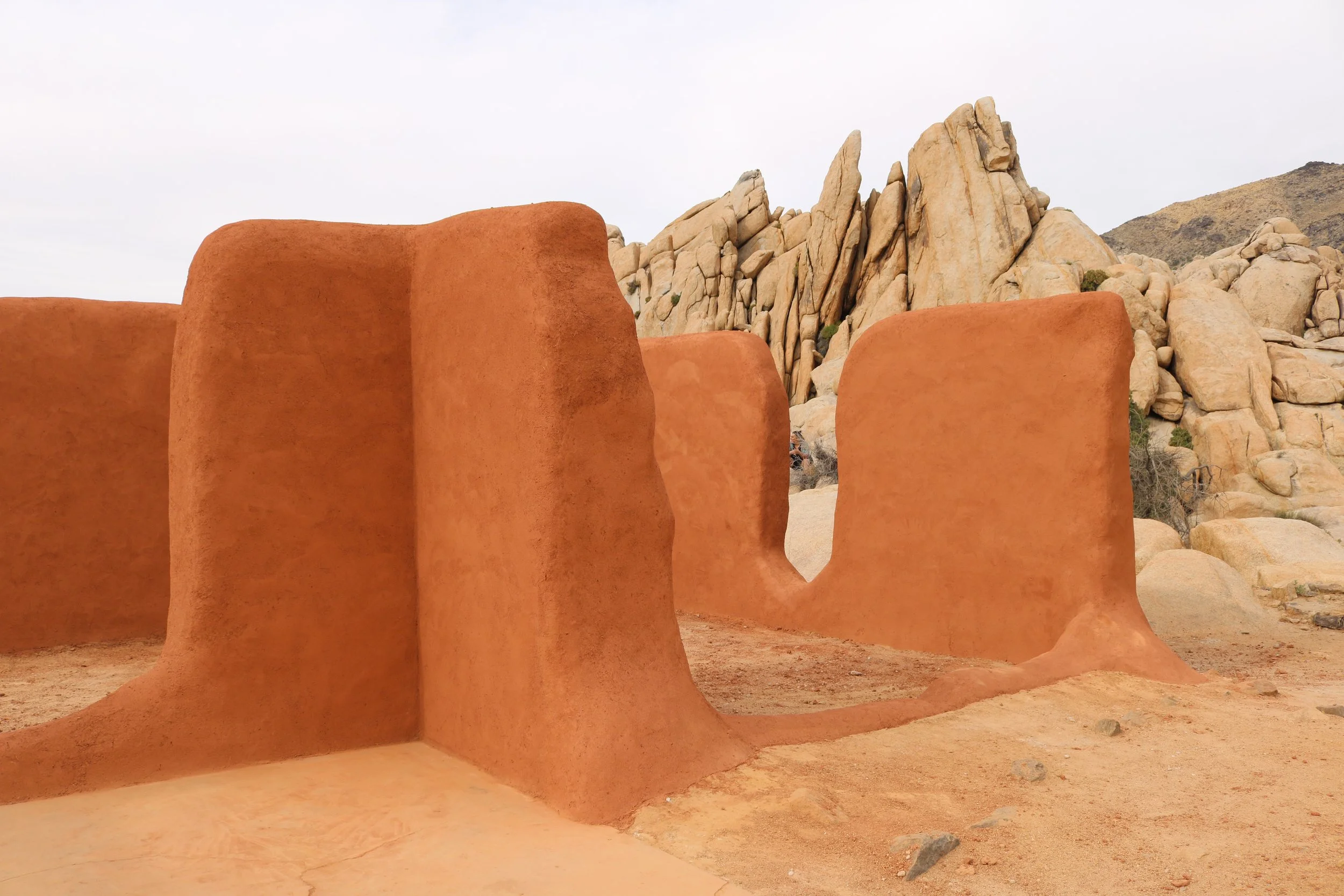Ryan Ranch
The area that is now known as Ryan Ranch, or Lost Horse Valley, shows evidence of human impact at least 5,000 years ago by the Pinto Culture. They were followed by the Serrano, the Chemehuevi, and the Cahuilla groups. In the 1800s, cattlemen and miners began to occupy the land. The Ryan family - wealthy ranchers from Wyoming - purchased the mine sometime after 1895. In 1896, the Ryans built a residence from adobe bricks that contained mine tailings.
The mine was successful for a short time, yielding 9,000 ounces of gold and a “respectable” amount of silver in the years between 1896 and 1899. When the original tunnel hit a geological fault, the miners were unable to locate the gold seam again. There were attempts to revive the mine in the early twentieth century, but it has been dormant since 1936. The area is now part of Joshua Tree National Park.
The Ryan Ranch House was constructed in 1896. The adobes were made with mining tailings from the nearby Lost Horse Mine operated by the Ryan brothers. Photographs from the 1920s and 1930s show a hipped metal roof and later photographs show two wood-framed additions—a front porch and kitchen on the northeast side. The house was occupied at least seasonally into the early 1940s. Currently, Ryan Ranch House is a ruin of a three room, single story adobe structure. A stone foundation, some of the adobe walls, and surrounding stonework are the only remaining architectural fabric.
Due to a fire in the late 1970s, these adobe walls have sat exposed for decades leaving them highly susceptible to erosion from rain and wind. Over the years, there has also been quite a lot of damage from visitors.
In 2021, we removed the deteriorated lime plasters and applied the earth plaster to the walls. Earth plasters–clay, sand, and straw–are traditionally used as a shelter coat to protect the adobes underneath while providing maximum “breathability”, or vapor permeability. Our return trip in 2022 focused on applying another coat of earthen plaster. Guided by our Lead Plasterer, Angela Francis, the crew replastered the walls alongside local volunteers, NPS staff, and park interns. This training was intended to set up the park with the tools and experience needed to patch or work on the walls when needed. We are continuing to monitor the walls and will return for the cyclical maintenance of remudding when needed.
